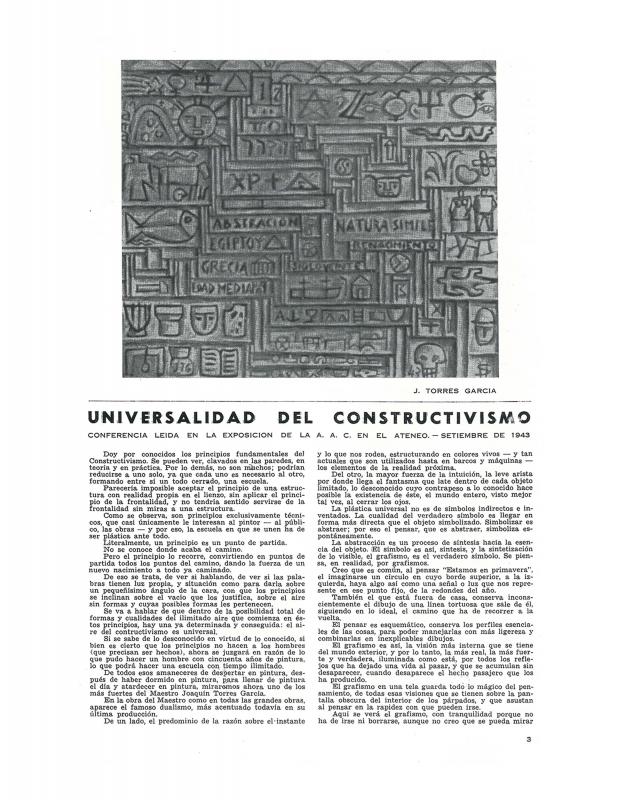In the years following his return to Montevideo, Joaquín Torres-García (1874–1949) kept up a regular correspondence with the European avant-garde artists he had known in Paris—people like Piet Mondrian, Jean Hélion, Jacques Lipchitz, and Julio González. He sent them the magazines published by the A.A.C. (Asociación de Arte Constructivo) and kept them informed about his goals and achievements in Montevideo. The principles Torres-García relied on to create the AAC, and then the TTG (Taller Torres-García ) in 1942, were all drawn from the art and teaching experience he gained in Europe in the early years of the twentieth century. During that period, he developed a doctrine that called on art to be a new grand narrative of values that could inject unity and axiological universality into the process of modernization that threatened to dismantle the unity of societies and destroy the fundamentals of community in every culture. In Torres-García’s opinion, what was needed was connection and exchange as the basis for an initiative grounded in a “communion of ideas.” It was no easy matter to launch an art ministry of this nature in a city like Montevideo where, in the 1930s, profound social, political, and cultural fault lines were beginning to appear.
Héctor Ragni (1897–1952) was one of the first enthusiastic members of the AAC. He had worked as a painter and woodcut printmaker in Barcelona before 1920, and then on the island of Mallorca with the Uruguayan painter Carlos Alberto Castellanos (1881–1945). During that time, he became familiar with Torres-García’s paintings and publications, including “El descubrimiento de sí mismo” [The Discovery of One’s Self] (1917). To a certain extent, that exposure gave some weight to his opinions, since Uruguayan artists (in general) were not familiar with Torres-García’s experience in Europe, or with the depths of his charisma or his apostolic perseverance.
[As complementary reading, see the ICAA digital archive for the following articles published in Cercle et Carré (Circle and Square): by Joaquín Torres-García “Aquí, en Montevideo” (doc. no. 1263116), “El plano en el que deseamos situarnos” (doc. no. 1263054), “Reflexiones” (doc. no. 1263191), “La presente revista” (doc. no. 1262991), and “El arte naturalista y el arte geométrico” (doc. no. 1263101); by Guido Castillo “El constructivismo. Muerte y nacimiento de un momento histórico” (doc. no. 1263176); by Alexis Carrel “El hombre, una incógnita” (doc. no. 1263085); by Edgar Varese “Nacionalismo y Folklore” (doc. no. 1263070); by Carmelo de Arzadun “Necesidad de agruparse para la formación de un medio artístico” (doc. no. 1263023); by San J. Luis Vicente “Nosotros y nuestro ambiente” (doc. no. 1263146); by Héctor Ragni “Nuestro arte constructivo y las teorías cubistas” (doc. no. 1263131); and by Francisco Lanza Muñoz “Universalidad del constructivismo” (doc. no. 1263161)].












